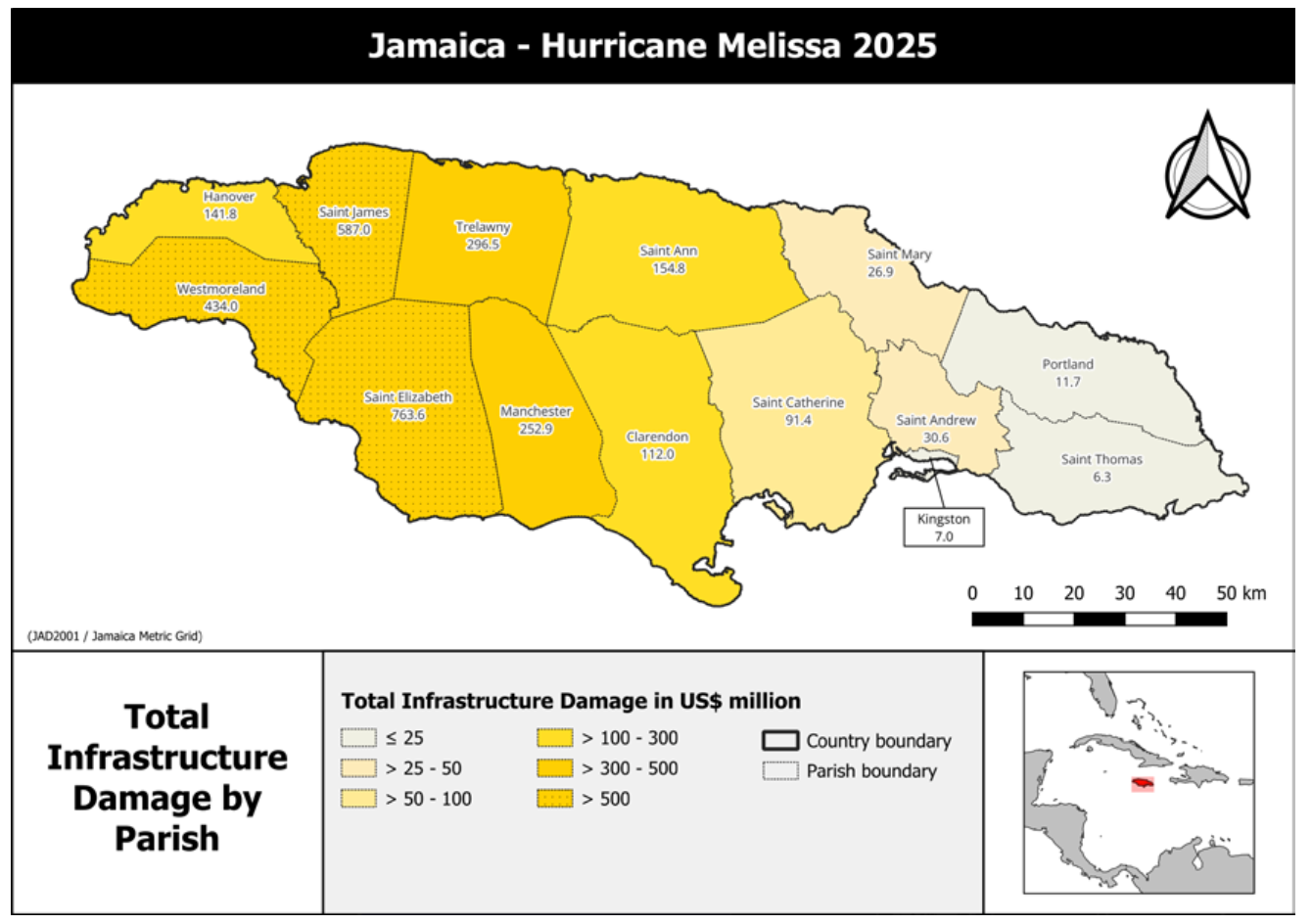A new World Bank–modeled assessment of Jamaica’s losses from Hurricane Melissa concludes that the country’s infrastructure was “widely compromised” and that its sophisticated disaster-risk financing (DRF) system—considered one of the strongest in the Caribbean—will cover only a “fraction” of the overall losses.
Melissa made landfall on October 28, 2025, as a top-end Category 5 hurricane with 185-mph winds, the strongest landfall ever recorded in Jamaica.
The Global Rapid Post-Disaster Damage Estimation (GRADE) report, released yesterday, places direct physical damage at US$8.75 billion—equal to 41 percent of Jamaica’s 2024 GDP and about 6 percent of its total exposed capital stock.
While residential buildings account for the largest share of absolute losses, infrastructure emerged as the most severely affected asset class relative to its size, absorbing US$2.9 billion, or about one-third of all damage from the storm.
The World Bank model also finds that the hurricane wiped out 7.2 percent of the nation’s infrastructure capital, including power systems, water networks, roads, bridges, telecommunications assets, airports, and coastal structures.

The report notes that Jamaica’s combined DRF toolkit—including contingency funds, parametric insurance structures, and a US$150 million World Bank–supported catastrophe bond that triggered on November 7—will fall far short of the country’s long-term financing needs.
“While Jamaica’s disaster-risk financing approach is among the strongest in the world, available instruments cover only a fraction of total impacts,” the report states.
Housing and Agriculture: Broad Exposure, Slow Rebuild
Residential losses reached US$3.7 billion, reflecting the vulnerability of informal and lower-income housing typologies, particularly structures lacking adequate roof-to-wall connections, the report states.
Tourism assets across the north and west—including large resorts, cruise-port facilities, and smaller boutique hotels—also reported severe damage, raising the possibility of a near-term downturn just as the winter travel season begins.
Agricultural damage totals US$389 million, including losses to 41,000 hectares of farmland, 1.25 million animals, and key crop sectors such as vegetables, bananas, fruit trees, yams, and coffee.
These losses fall disproportionately on rural households still recovering from Hurricane Beryl in 2024, with the World Bank warning of increased food insecurity and deepening rural poverty.





